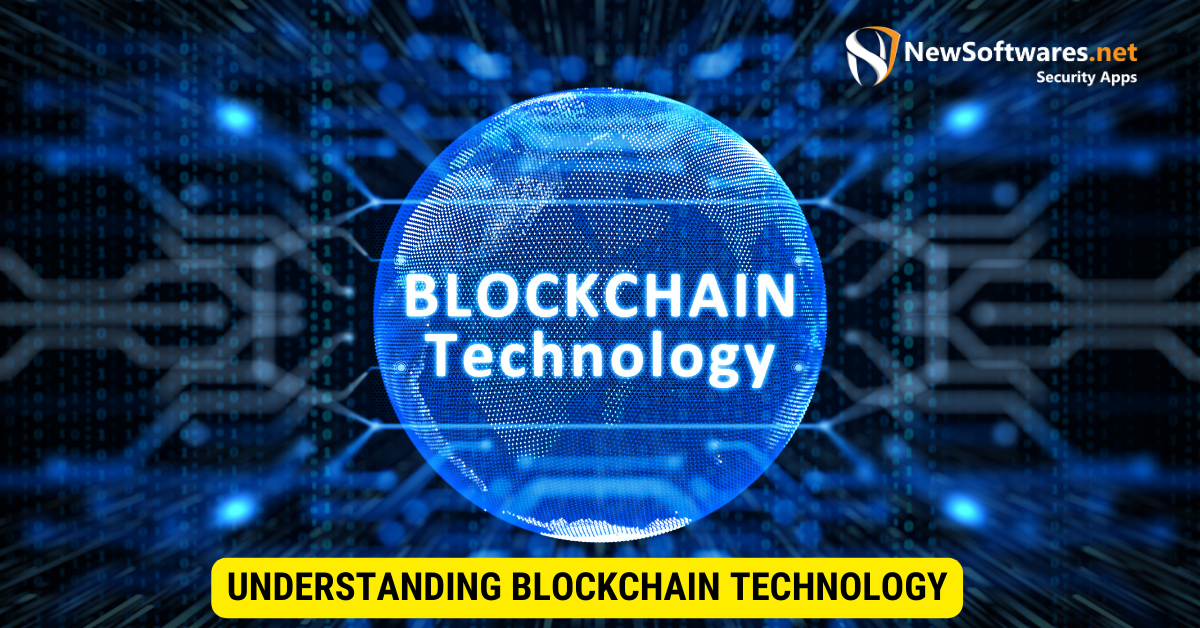Blockchain technology uses cryptographic methods to store data in blocks, which are then chained together. Each block holds a previous block’s hash, ensuring data integrity and security.
Blockchain technology has transformed the way data is stored and transmitted. With its decentralized and secure nature, blockchain has become a vital tool in ensuring the safety and integrity of digital information. We will discover the basics of blockchain technology, its key features, and role in data security. We will also delve into the implementation of blockchain for data storage, the potential challenges that may arise, and the future trends in blockchain and data security.
Understanding Blockchain Technology

The Basics of Blockchain
At its core, blockchain is a digital record that records transactions across multiple computers. Each transaction is bundled into a block and added to the chain after being verified by a network of participants, known as nodes. This verification process ensures the immutability and transparency of the data stored in the blockchain.
But let’s dive deeper into how this process works. When a contract is initiated, it is broadcast to the network of nodes. These nodes then compete to solve a complex mathematical puzzle, known as proof-of-work, to validate the transaction. The first node to resolve the puzzle adds the block to the chain and broadcasts the rationalized blockchain to the rest of the network.
Now, you might be wondering why is this verification process necessary. Well, it’s all about trust. The blockchain ensures that no single entity can manipulate the data by having multiple nodes validate each transaction. This distributed approach eliminates the need for a central authority and makes the system more resilient to attacks and tampering.
Key Features of Blockchain Technology
Blockchain technology offers some key features that make it suitable for secure data storage and transmission:
1. Security: Blockchain ensures data integrity and security through cryptographic techniques. Each block is linked to the earlier one using a cryptographic hash, making it virtually impossible to alter or tamper with the data without detection.
Let’s take a closer look at how cryptographic hashes work. A cryptographic hash function takes an input (in this case, the data in a block) and crops a fixed-size string of characters unique to that input. Even a small change in the input data will result in a completely different hash. This property makes it extremely difficult for anyone to modify the data within a block without changing the hash, thus alerting the network to the tampering attempt.
2. Transparency: The decentralized nature of blockchain allows for transparent and auditable transactions. All network members can view and verify the transactions, increasing trust and accountability.
Imagine a scenario where you want to buy a used car. With traditional systems, you would have to rely on the seller’s word and trust that they provide accurate information about the car’s history. However, with blockchain, you can access the entire transaction history of the car, from its manufacturing to every previous owner and maintenance record. This transparency ensures you have a complete and trustworthy picture of the car’s background.
3. Immutability: Once a block is added to the chain, it becomes nearly impossible to modify the data within it. This immutability feature provides a reliable and tamper-proof record of information.
Let’s consider a scenario where a company wants to store its financial records on the blockchain. By doing so, they can ensure that the records are tamper-proof and cannot be altered retroactively. This immutability feature provides high trust and integrity, making blockchain an ideal solution for industries where data integrity is crucial, such as finance, healthcare, and supply chain management.
4. Efficiency: Blockchain eradicates the need for mediators in transactions, reducing costs and speeding up the process. Smart contracts, self-executing agreements built on the blockchain, automate processes and ensure compliance.
Let’s say you want to sell a piece of artwork online. Traditionally, you would need to involve intermediaries like art dealers, auction houses, and lawyers to ensure a secure and trustworthy transaction. However, you can automate the entire process with blockchain and smart contracts. The smart contract can include conditions such as the handover of ownership and the release of funds, which are automatically executed once the conditions are met. This reduces costs and speeds up the transaction, making it more efficient for both the buyer and the seller.
The Role of Blockchain in Data Security
Enhancing Data Security with Blockchain

Data security is a paramount concern in today’s digital world. Organizations face constant threats from hackers and cybercriminals who seek to steal or manipulate sensitive information. Blockchain technology offers advanced security measures that can enhance data protection.
By decentralizing data storage and encryption, blockchain reduces the risk of a single point of failure. Traditional centralized databases are vulnerable to attacks, as breaching a single server can compromise the entire system. In contrast, blockchain distributes data across multiple nodes, making it more resistant to hacking attempts.
Furthermore, blockchain’s cryptographic algorithms ensure the confidentiality and integrity of data. Encryption techniques, such as public-key cryptography, protect sensitive information from unauthorized access. Additionally, the immutability of blockchain prevents unauthorized modifications, providing a trustworthy record of data transactions.
Blockchain for Secure Data Transmission
Aside from data storage, blockchain technology also plays a crucial role in secure data transmission. Traditional data transfer methods involve relying on intermediaries or centralized systems, which introduce vulnerabilities and potential points of failure. Blockchain offers an alternative solution that ensures secure and direct peer-to-peer communication.
With blockchain, data can be encrypted and transmitted between parties without intermediaries. Smart contracts enable the automation of data transfer procedures, reducing the chances of human error or tampering. Moreover, the transparency of blockchain allows participants to verify the authenticity and integrity of the transmitted data.
Implementing Blockchain for Data Storage

Steps to Use Blockchain for Data Storage
Implementing blockchain for data storage requires careful planning and consideration. The following steps outline the process:
- Determine Use Case: Identify the specific use case for blockchain in data storage. Assess the profits and drawbacks of using blockchain technology in your organization.
- Select a Platform: Choose a blockchain platform that suits your requirements. Consider factors such as scalability, security features, and developer support.
- Design Data Structure: Determine the structure and format of the data to be stored in the blockchain. Define the necessary fields and attributes for each transaction.
- Develop Smart Contracts: Create smart contracts to automate data storage and retrieval processes. Define the rules and conditions for accessing and updating the data.
- Test and Deploy: Conduct thorough trying of the blockchain solution to ensure its functionality and security. Deploy the solution to your network and monitor its performance.
Potential Challenges in Blockchain Implementation
While blockchain technology offers numerous benefits, implementing it for data storage can present certain challenges:
- Scalability: Blockchain networks may face scalability issues due to the increasing size of the chain and the computational power required for consensus.
- Integration with Existing Systems: Integrating blockchain with legacy systems can be complex and time-consuming. Organizations must consider the compatibility and interoperability of their systems.
- Regulatory and Legal Considerations: Blockchain implementation may be subject to specific regulations and legal requirements. Organizations must navigate these compliance challenges to ensure a smooth adoption process.
- Energy Consumption: The energy-intensive nature of blockchain networks, particularly those using proof-of-work as a consensus mechanism, raises concerns about sustainability and environmental impact.
Future of Blockchain in Data Security
Emerging Trends in Blockchain Technology
The field of blockchain technology is continuously evolving, with new trends shaping the future of data security:
- Integration with Artificial Intelligence and IoT: Blockchain is expected to integrate with emerging technologies like artificial intelligence and the Internet of Things (IoT), creating a more interconnected and secure ecosystem.
- Interoperability between Blockchains: Efforts are underway to improve the interoperability between different blockchain networks. This would enable seamless data exchange and collaboration across diverse platforms.
- Privacy-enhancing Solutions: The development of privacy-enhancing technologies within blockchain allows for secure and confidential transactions while still maintaining the advantages of transparency and accountability.
Predictions for Blockchain and Data Security
As blockchain matures, its impact on data security will grow significantly. Experts predict the following trends in the coming years:
- Widespread Adoption: Blockchain technology will become increasingly mainstream, with organizations across various industries embracing its potential for secure data storage and transmission.
- Regulatory Frameworks: Governments and regulatory bodies will create frameworks to govern blockchain technology, ensuring compliance and protecting consumer rights.
- Industry-specific Solutions: Blockchain will be tailored to specific industries, addressing their unique data security challenges. Sectors such as healthcare, finance, and supply chain management stand to benefit greatly.
Key Takeaways
- Blockchain offers a decentralized and immutable record-keeping system.
- Data in the blockchain is transparent and verifiable by all parties involved.
- Smart contracts automate and secure data-related transactions.
- Blockchain’s encryption methods ensure data confidentiality.
- Private and public key pairs safeguard data access and transmission.
FAQs:
Q: Can blockchain be hacked?
A: While blockchain is secure by design, vulnerabilities in implementations or ancillary systems can lead to breaches.
Q: What’s the difference between public and private blockchains?
A: Public blockchains are open to everyone, while private blockchains restrict access to specific members.
Q: Is blockchain suitable for all data types?
A: Blockchain is best for data that requires transparency, immutability, and decentralization. It might not be efficient for large-volume, rapidly changing data.
Q: How does blockchain ensure data authenticity?
A: By using cryptographic hashes and consensus mechanisms.
Q: Does blockchain replace traditional databases?
A: No, it complements them based on specific use cases.
Conclusion
In conclusion, blockchain technology provides a robust, secure solution for storing and transmitting data. Its decentralized nature, cryptographic algorithms, and transparent design enhance data security and trust. By understanding the basics of blockchain, exploring its key features, and implementing it strategically, organizations can unlock the potential of this transformative technology in safeguarding their valuable data.
